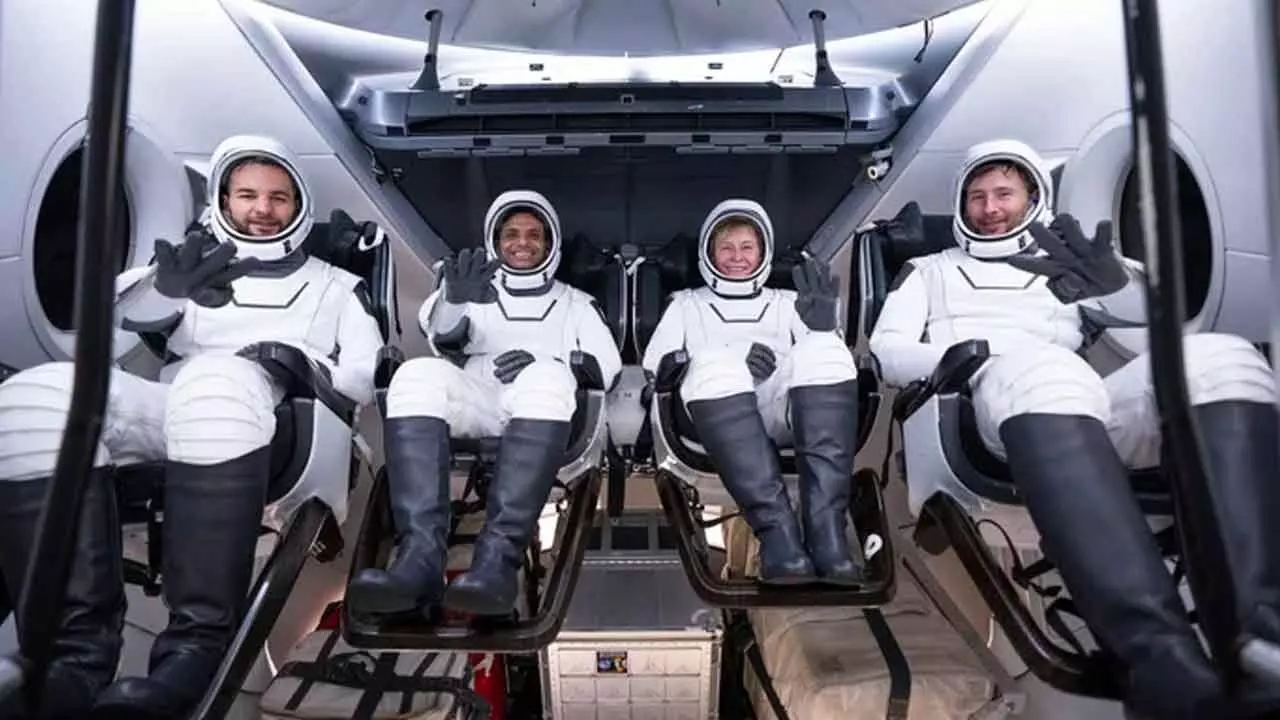India's New Space Odyssey: Group Captain Shukla Blazes a Trail to the ISS
Join Group Captain Shubhanshu Shukla, the second Indian to journey to space, as he pilots the Dragon spacecraft to the International Space Station. Discover the Axiom-4 mission's historic significance for India, Poland, and Hungary, and the exciting future of human spaceflight.
India's New Space Odyssey: Group Captain Shukla Blazes a Trail to the ISS

A new chapter in India's space ambitions unfurled yesterday as Group Captain Shubhanshu Shukla embarked on a monumental journey aboard the Axiom-4 mission, bound for the International Space Station (ISS). Taking off from NASA's Kennedy Space Center in Cape Canaveral, Florida, Shukla became only the second Indian to ever travel to space, marking a truly historic moment for the nation.
From Fighter Jet to Starship Pilot
A seasoned Indian Air Force fighter and test pilot with over 2,000 hours of flying experience, Shukla is the designated pilot for the cutting-edge Crew Dragon spacecraft. His precision and expertise were on full display as the spacecraft lifted off exactly at noon India time, beginning its 28-hour voyage through the cosmos. The Dragon is set to gracefully dock with the ISS around 4:30 PM India time today, where Shukla and his three fellow astronauts will join the only permanent research laboratory in space for two weeks of scientific experiments and crucial outreach events.
A Legacy Reclaimed, a Future Launched
Shukla's incredible feat arrives 41 years after Squadron Leader Rakesh Sharma, who later retired as Wing Commander, etched his name in history as the first Indian in space aboard the Soviet Union's Soyuz T-11 spacecraft. Sharma's eight-day stay on the Salyut 7 space station paved the way for this new era of Indian space exploration.
The Axiom-4 mission, themed 'Realize the Return,' also celebrates the comeback of Poland and Hungary to space after more than four decades, with astronauts Slawosz Uznanski-Wisniewski and Tibor Kapu representing their nations. Leading this diverse crew is Peggy Whitson, a true veteran of space travel with an astounding four previous trips and a record-breaking 675 days spent in orbit.
"On My Shoulders is the Tiranga"
Just ten minutes after a successful launch, with the spacecraft having separated from its rocket and entering Earth's orbit, a visibly thrilled Shukla shared his emotions. "What a ride. After 40 years, we are back in space. What a flight this is," he exclaimed.
Addressing his countrymen in Hindi, he continued, "Right now, we are going around the Earth at the speed of 7.5 km a second. On my shoulders is the Tiranga (Tricolour) that is telling me that I am not alone here, all of you are with me. This journey to the International Space Station is not my alone, this is the beginning of Bharat’s human spaceflight programme." His heartfelt message resonated deeply: "I would like each one of you to become a part of this journey. You should also feel proud, you should also feel the excitement. Come, let us together mark the beginning of India’s human spaceflight programme. Thank you. Jai Hind. Jai Bharat."
National Pride and Global Collaboration
The successful liftoff garnered widespread jubilation, including a congratulatory post on X from Prime Minister Narendra Modi. "We welcome the successful launch of the Space Mission carrying astronauts from India, Hungary, Poland and the US," he stated, adding, "The Indian Astronaut, Group Captain Shubhanshu Shukla is on the way to become the first Indian to go to the International Space Station. He carries with him the wishes, hopes and aspirations of 1.4 billion Indians. Wish him and other astronauts all the success!"
Despite facing multiple delays due to weather and technical glitches, including a last-minute data upload uncertainty that saw Shukla patiently shuffling his feet in the capsule, the mission's perseverance paid off. ISRO Chairman V. Narayanan, who was present in the US for the launch, expressed immense satisfaction. "Today, we were 100% sure about the safety of not just our own astronaut Shubhanshu Shukla, but the other three brothers and sister who are going to space with him. Congratulations to all," Narayanan told The Indian Express. He affirmed ISRO's deep involvement in troubleshooting, stating, "If I had even 0.1% doubt, I would not have said OK to the launch."
Paving the Way for Gaganyaan
Narayanan confirmed the spacecraft's entry into a 200-km orbit, which will be gradually raised to 425 km over the 28-hour period before docking. The ISRO team is now heading to Houston, Texas, to witness the crucial docking from the command center.
Shukla's participation in the Axiom-4 mission is a significant stepping stone for India's own ambitious Gaganyaan program, ISRO's inaugural human spaceflight endeavor. While Gaganyaan, initially slated for 2022, is now expected in 2027, a new collaboration between ISRO and NASA in 2023 opened the door for an Indian astronaut to join a private mission, leading directly to Shukla's involvement in Axiom-4.
A Nation Watches and Celebrates
The launch was met with enthusiastic cheers at the CSIR headquarters in New Delhi, where Science Minister Jitendra Singh, along with scientists and dignitaries including Australian High Commissioner to India Philip Green, watched the historic event unfold.
Minister Singh emphasized the transformative impact of recent space reforms under Prime Minister Modi's leadership. "This was destined to happen under the leadership of Prime Minister Modi," he stated. "Imagine, ISRO was set up in the year 1969, when NASA accomplished the landing of the first human on the Moon. Today, we have landed near the southern pole of the Moon before anyone else. And we are now collaborating with NASA as an equal partner. India is no longer a follower."
The Axiom-4 mission itself is a testament to global private-public partnerships, operated and managed by Axiom Space, a private US company. The powerful Falcon 9 rocket and Dragon spacecraft were provided by SpaceX, the world's largest private space corporation, while NASA offered access to its facilities, the ISS, and astronaut training.

